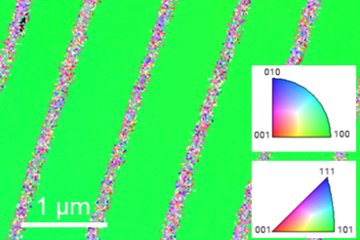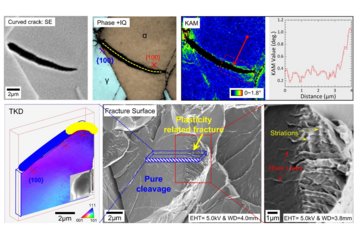All genres
121.
Talk
The Dangling-Bond Defect in Amorphous Silicon: Statistical Random Versus Kinetically Driven Defect Geometries. 24th International Conference on Amorphous and Nanocrystalline Semiconductors (ICANS 24), Nara, Japan (2011)
122.
Talk
A Detailed Investigation of Native and Light-induced Defects in Hydrogenated Amorphous Silicon by Electron-spin Resonance. MRS Spring Meeting and Exhibit 2011, San Francisco, CA, USA (2011)
123.
Talk
EPR parameters of the dangling bond defect in crystalline and amorphous silion: A DFT-study. APS march meeting 2011, Dallas, TX, USA (2011)
124.
Talk
Quasiparticle band offsets at heterojunctions from GW superlattice calculations. DPG Frühjahrstagung 2011, Dresden, Germany (2011)
125.
Talk
EPR parameters of the dangling bond defect in crystalline and amorphous silion: A DFT-study. DPG spring meeting 2011, Dresden, Germany (2011)
126.
Talk
Fully ab initio finite-size corrections for electrostatic artifacts in charged-defect supercell calculations. Psi-k Conference 2010, Berlin, Germany (2010)
127.
Talk
Charged defects in the supercell approach. Seminar at Duisburg University, Duisburg, Germany (2010)
128.
Talk
Charged defects in the supercell approach. Seminar at Fritz-Haber-Institut der MPG, Berlin, Germany (2010)
129.
Talk
Defect distributions at III-nitride interfaces from ab-initio-based thermodynamic data. DPG spring meeting, Regensburg, Germany (2010)
130.
Talk
Constructing fully numerical, quantitatively optimized atomic orbitals basis-sets. DPG Frühjahrstagung 2010, Regensburg, Germany (2010)
131.
Talk
A theoretical study of hyperfine parameters in amorphous silicon. DPG Frühjahrstagung 2010, Regensburg, Germany (2010)
132.
Talk
Fully ab initio finite size corrections for charged defects in the supercell approach. APS march meeting, Portland, OR, USA (2010)
133.
Talk
PAW implementation in S/PHI/nX. Computational Materials Science on Complex Energy Landscapes Workshop, Imst, Austria (2010)
134.
Talk
Fully numerical orbitals as an analyzable Tight Binding Basis Set. Computational Materials Science on Complex Energy Landscapes Workshop, Imst, Austria (2010)
135.
Talk
Band alignment in the framework of GW theory. Computational Materials Science on Complex Energy Landscapes Workshop, Imst, Austria (2010)
136.
Talk
Ab initio investigations of the silicon dangling bond. Computational Materials Science on Complex Energy Landscapes Workshop, Imst, Austria (2010)
137.
Talk
Theory of defect distribution at semiconductor interfaces based on ab-initio thermodynamics. MRS Fall Meeting, Boston, MA, USA (2009)
138.
Talk
Calculation of defect distribution at interfaces from ab-initio-based thermodynamic data. MRS Fall Meeting, Boston, MA, USA (2009)
139.
Talk
Highly p-doped GaN:Mg! What hinders the thermal drive-out of hydrogen? 2. Klausurtagung des Graduierten Kollegs: Mikro und Nanostrukturen in der Optoelektronik, Bad Karlshafen, Germany (2009)
140.
Talk
What can EPR hyperfine parameters tell about the Si dangling bond? - A theoretical study. International conference on amorphous and nanoporous semiconductors (ICANS) 23, Utrecht, Netherlands (2009)











